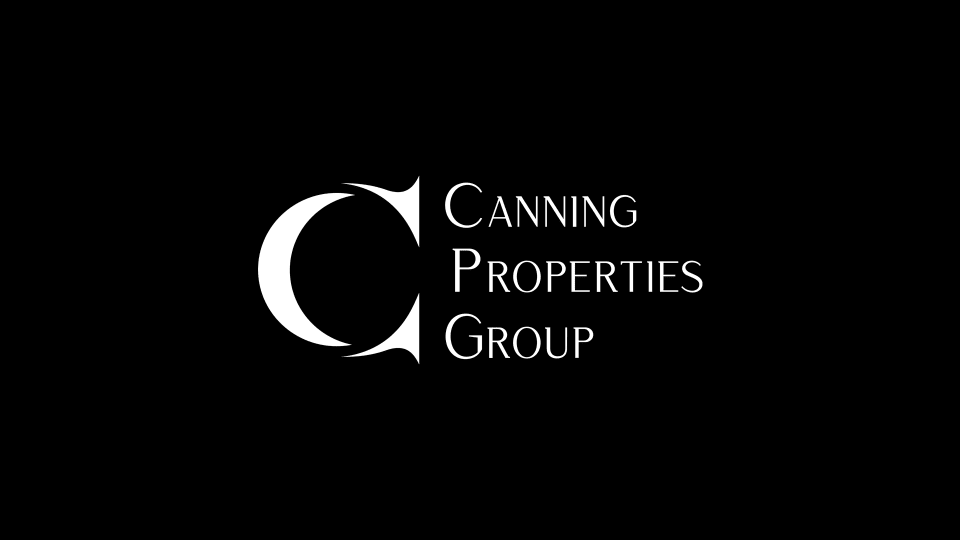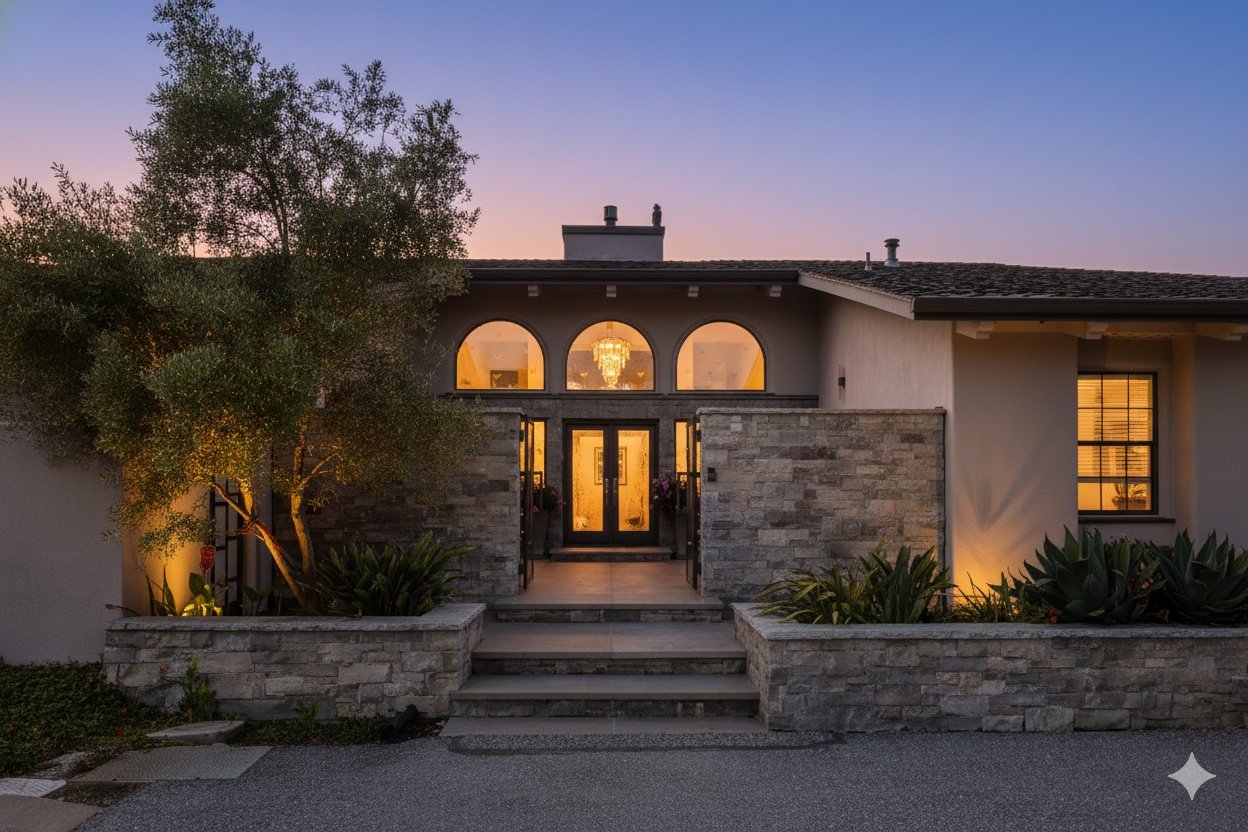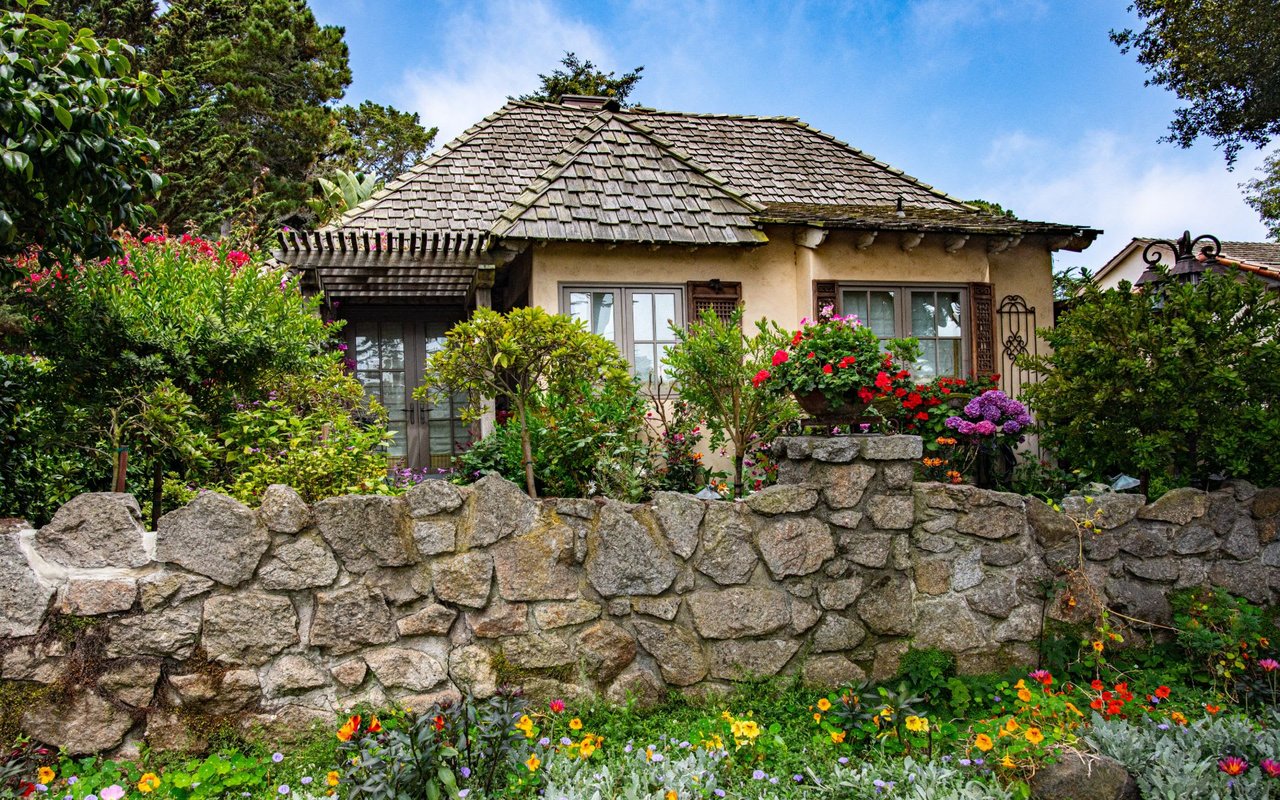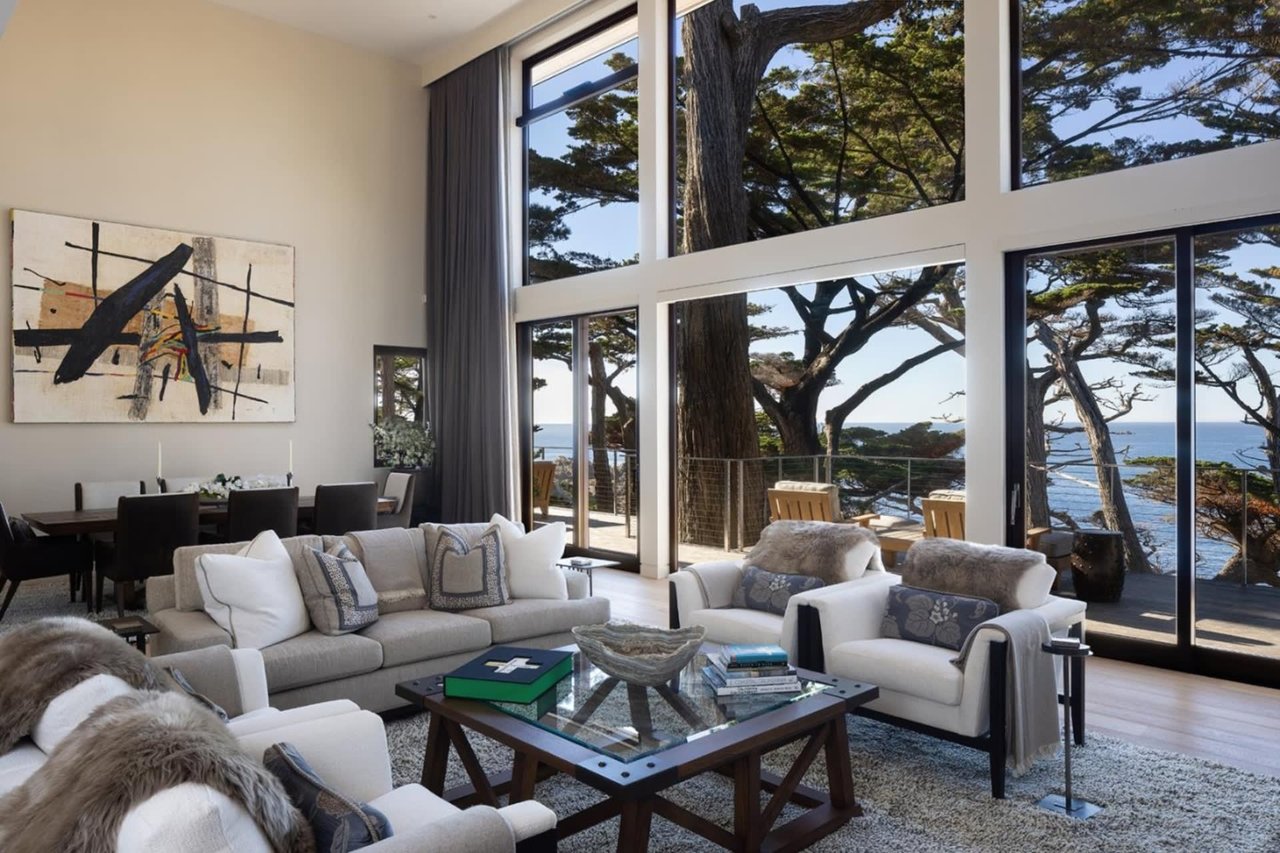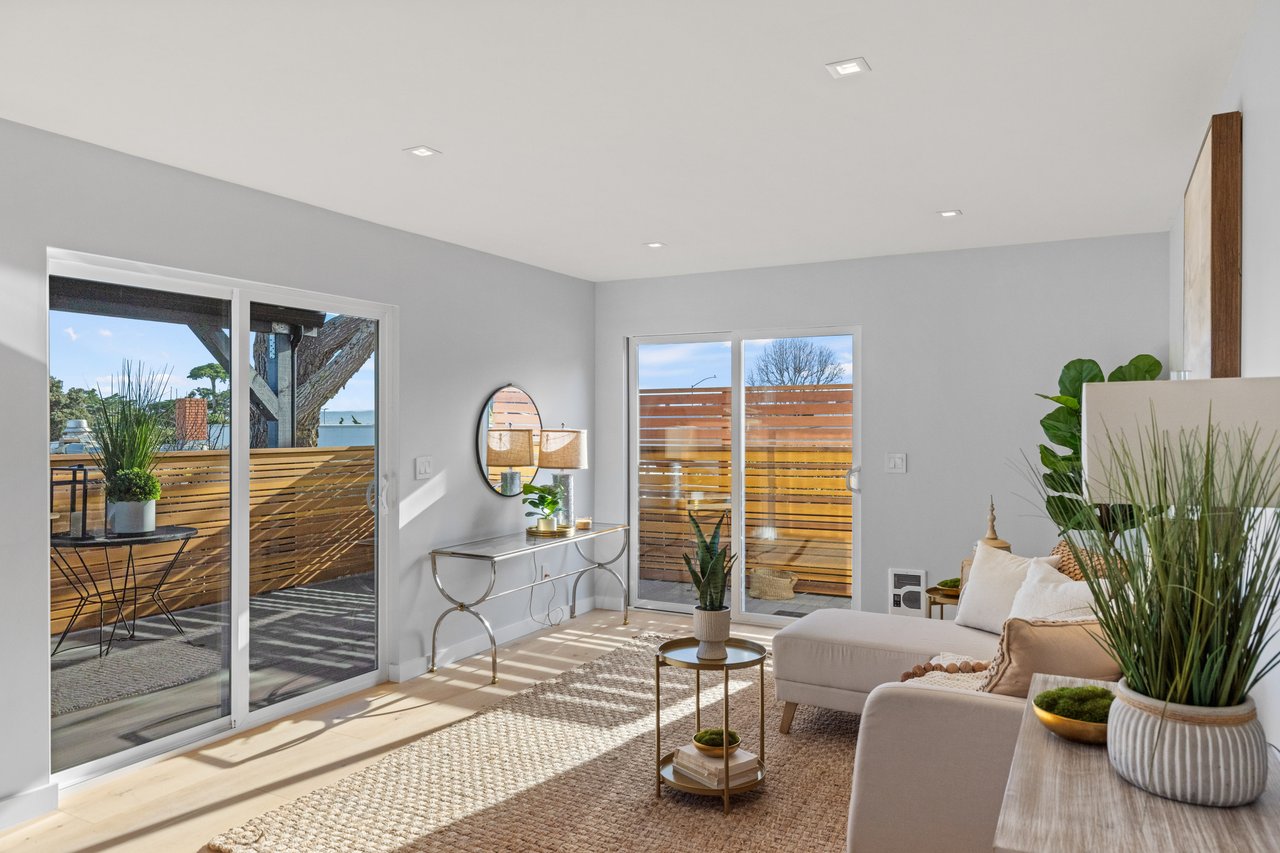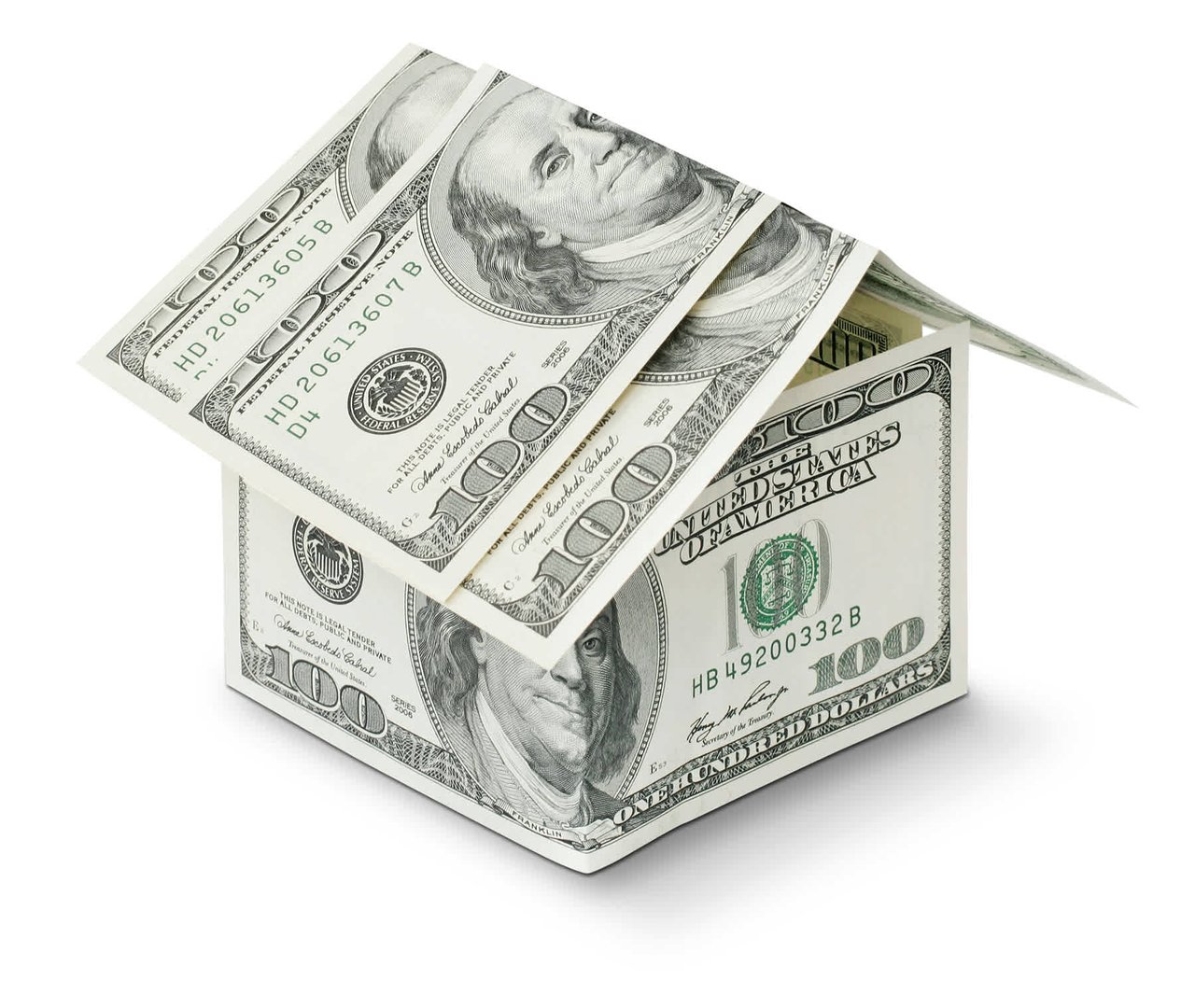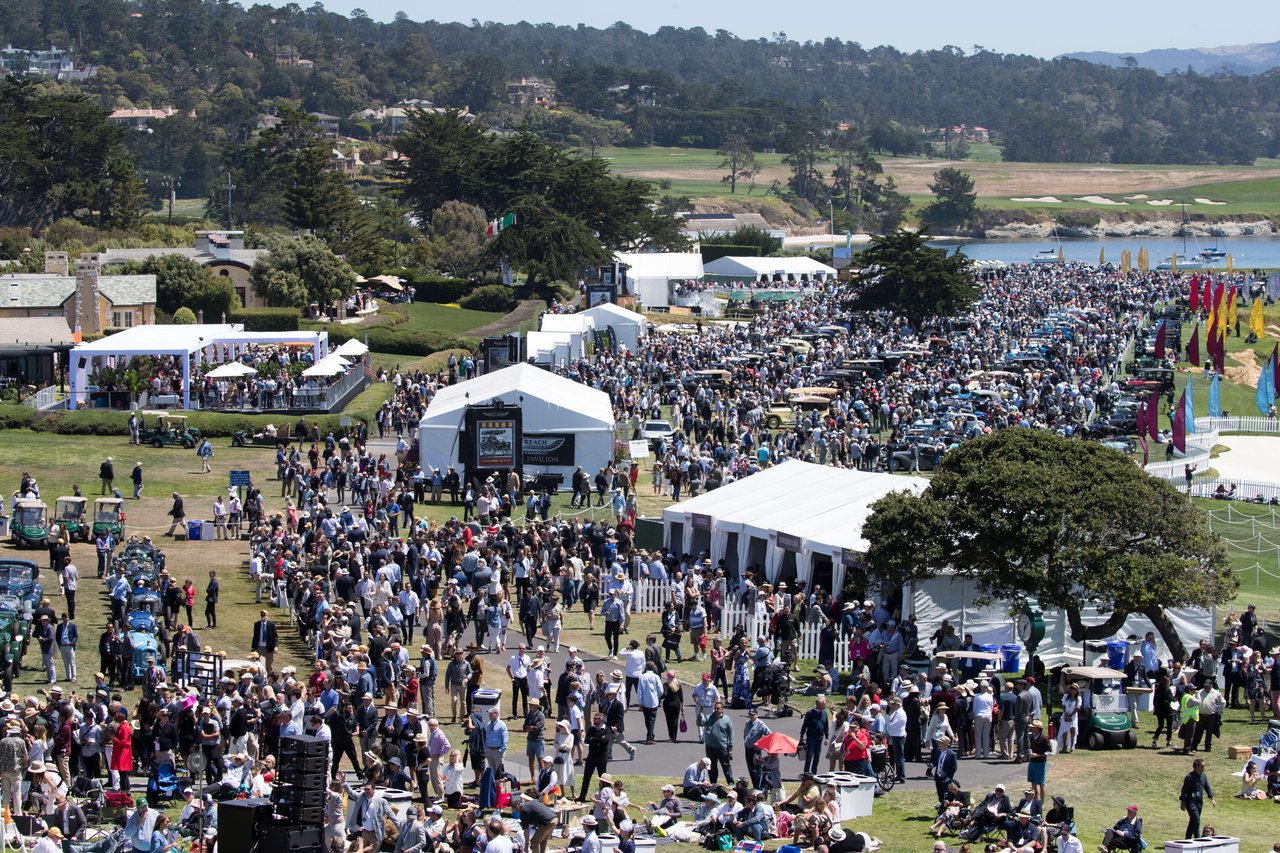The Problem with Square Footage Pricing
The inherent issue with price per square foot lies in its oversimplification. The metric assumes that every square foot of a home is of equal value – a flawed assumption in any real estate market, but especially in one as diverse and nuanced as the Monterey Peninsula. Price per square foot might work in a suburban development where homes are nearly identical in size, style, and lot configuration, but it falls short when applied to properties in unique locales like ours. Here’s why:
- Location Variability: On the Monterey Peninsula, location is king. A 2,000 square foot home in Carmel-by-the-Sea is fundamentally different from a 2,000 square foot home in Pebble Beach. One might offer unobstructed ocean views and direct beach access, while the other sits inland, surrounded by a thick canopy of trees. To reduce these vastly different properties to a single price per square foot metric ignores the critical role that location plays in determining value. In fact, you could have two homes just a few hundred yards apart with drastically different valuations because one offers sweeping coastal views, while the other doesn’t. This is especially true along 17 Mile Drive, where oceanfront homes can command three times the price per square foot of homes across the street on the inland side.
- Architectural Integrity: Homes on the Monterey Peninsula vary widely in architectural style, design, and craftsmanship. A modest mid-century bungalow in Pacific Grove cannot be compared to a custom-built Mediterranean estate in Pebble Beach, even if they have the same square footage. The value of these homes is not in the number of rooms or the size of the footprint, but in the thoughtfulness of the design, the quality of the materials, and the historical significance or architectural pedigree of the property. Square footage pricing fails to capture these nuances.
- Lot Size and Value: In many cases, smaller homes actually command a higher price per square foot values than larger ones, simply because the lot on which they sit holds so much of the overall value. A 1,500 square foot home on a prime oceanfront lot in Carmel will have a higher price per square foot than a 5,000 square foot home further inland. The land is more valuable than the house itself, and that dynamic skews the price per square foot calculation, making it a poor indicator of true value.
- Subjective Elements: Real estate in this region is anything but formulaic. Views, privacy, proximity to town, condition of the home, access to the beach, and even the microclimate of a specific location can heavily influence a home's value. These subjective elements are not accounted for in a per square foot analysis. For instance, a home perched on the cliffs of Big Sur with panoramic ocean views is incomparable to one of the same size tucked away in the inland hills, yet price per square foot doesn’t differentiate between these variables.
The Misleading Nature of Homogeneity
One of the few instances where price per square foot might offer some insight is in highly homogeneous markets where the homes are nearly identical in layout, style, and location. Such uniformity is rare on the Monterey Peninsula. Even in areas like Carmel's Golden Rectangle, where homes on 4,000-square-foot lots share similar footprints and architectural styles, variations in view, sunlight, and proximity to amenities make the square footage metric unreliable. Once you leave such areas and enter more diverse neighborhoods, or higher-end enclaves like Pebble Beach, the variability becomes even more pronounced, further reducing the relevance of this metric.
Subjectivity of Value
One of the reasons we love working in the Monterey Peninsula real estate market is because of how subjective value is. Unlike homogenous neighborhoods where homes are built to a similar size, style, and price, here, every home tells a different story. This subjectivity means that pricing homes involves much more than running simple calculations based on square footage. It involves understanding the intricate components of value unique to each property, neighborhood, and sub-market. In real estate markets with unique properties like the ones found in the Monterey Peninsula, value becomes more of an art than a science. Homes are evaluated based on factors that evoke emotion, desirability, and scarcity – not simply on how much space they offer. What is a home worth to someone who has been dreaming of waking up to the sound of the waves crashing outside their window? What is it worth to someone who wants the prestige of living along 17 Mile Drive or having views of the famed Pebble Beach golf course? These questions go far beyond square footage value and enter the realm of personal value and emotional investment.
Smaller Homes, Higher Prices?
One of the biggest misconceptions surrounding price per square foot is the assumption that a larger home is always worth more. In reality, smaller homes often have a higher price per square foot, especially in desirable markets like the Monterey Peninsula. Why? Because lot size, location, and demand drive prices, not just the amount of living space. The land that a small cottage sits on in Carmel might be far more valuable than the house itself, and that drives up the price per square foot disproportionately compared to a larger home on a less valuable lot. In essence, price per square foot is often a distraction from the broader assessment of a home’s true value. It’s challenging to put a number on things like charm, character, and a breathtaking ocean view.
Real Estate is Not Algebra
The idea that you can break down a home’s value into a simple algebraic calculation is appealing to some, but it’s also fundamentally flawed—especially here on the Monterey Peninsula. Real estate is not just about numbers; it’s about understanding the market, knowing what makes a home special, and recognizing the intangibles that make certain properties worth so much more than others. A real estate agent’s job is to navigate these complexities, knowing that price per square foot is just one small piece of a much larger puzzle.
What Truly Determines Value
When assessing the value of a home in a complex and desirable market like the Monterey Peninsula, we look beyond the superficial numbers and dive into the qualitative aspects that drive property values. Here are some of the most critical factors we use that influence value far more than square footage:
- Views: Whether a property offers unobstructed oceanfront vistas, mountain views, or secluded forest scenery is one of the largest drivers of value. A panoramic view of the Pacific Ocean can increase a home’s value exponentially, often overshadowing the importance of square footage.
- Proximity to Desirable Amenities: Access to the beach, golf courses, fine dining, and cultural centers adds significant value. Homes located near iconic locations like the Pebble Beach Golf Links or Carmel Beach will always demand a premium, regardless of their size.
- Privacy and Lot Configuration: The degree of privacy a home offers—whether it's nestled on a larger parcel or tucked away from the road—can significantly impact its value. A small home with ultimate privacy may be far more valuable than a larger home in a crowded area.
- Architectural Significance: Homes with historical significance, unique design elements, or renowned architects attached to their names carry intrinsic value. Whether it’s a Frank Lloyd Wright-inspired design or a custom modernist build, the architecture can command a premium that far surpasses the value calculated by square footage alone.
- Lifestyle and Cultural Prestige: Living in a place like Carmel or Pebble Beach offers more than just shelter – it’s a lifestyle that combines natural beauty, cultural prestige, and exclusivity. The desirability of these neighborhoods, rooted in their history and charm, often means that homes hold their value independently of size.
- Microclimate and Weather: The Monterey Peninsula boasts a variety of microclimates, with some areas offering cool ocean breezes, while others experience more sun and warmth. A home located in a particularly desirable microclimate – perhaps one that enjoys more sunshine or is protected from coastal winds – can command a higher value than similar homes just a few miles away. The weather and comfort a property offers throughout the year can be a significant driver of value.
- Zoning and Development Potential: The future potential of a property, whether it’s the ability to expand, subdivide, or develop additional structures, can vastly increase its value. Buyers and investors are often drawn to properties with favorable zoning laws, as they offer opportunities for future development, which can make them more appealing than similar properties with larger square footage but more restrictive zoning.
- Condition and Upgrades: The overall condition of the home, including any recent renovations or upgrades, can greatly influence its value. Custom, high-quality finishes, modernized kitchens and bathrooms, energy-efficient systems, and smart home technology often add substantial value that isn’t captured by square footage alone. Even a smaller home with top-tier finishes can outperform a larger, outdated property in terms of value.
- Historical and Artistic Value: Some properties in the Monterey Peninsula may carry historical significance or be located in historic districts, which adds value that goes beyond their physical structure. Homes that have been featured in architectural magazines, or properties with artistic flair, such as murals, sculptures, or custom interior design, often hold a unique value in the eyes of collectors or those with an appreciation for art.
- Environmental Sustainability: In today's real estate market, the sustainability of a property can also play a significant role in its value. Homes with eco-friendly features like solar panels, water-saving landscaping, and energy-efficient appliances are increasingly sought after. A green-certified home, even if smaller in size, can command a higher price because of its lower operational costs and appeal to environmentally conscious buyers.
- Scarcity and Exclusivity: The Monterey Peninsula is one of the most exclusive real estate markets in the world, with very limited available land and development opportunities. The scarcity of available homes in sought-after neighborhoods like Pebble Beach or Carmel-by-the-Sea significantly drives up property values. In such cases, rarity and exclusivity can be far more valuable than the size of the home itself.
- Landscaping and Outdoor Living Spaces: A property’s outdoor environment can be just as valuable as the interior square footage. A well-designed garden, expansive outdoor living spaces, terraces with ocean views, or a private outdoor kitchen can significantly elevate a home’s value. Buyers today often seek homes that seamlessly blend indoor and outdoor living, with lush, mature landscaping, privacy hedges, and decks adding more appeal than sheer indoor square footage.
- Access to Off-Market Listings: In high-demand areas like Carmel and Pebble Beach, many transactions happen off-market, meaning they never appear on public listings. Homes in these "pocket listings" often command premium prices due to their exclusive nature. If you're an unrepresented buyer, you won't have access to this hidden inventory, making square footage comparisons irrelevant when you’re not even seeing the full range of available properties.
- School Districts and Education Quality: Homes located in top-rated school districts often carry a premium, regardless of square footage. Buyers with families, or those planning for the future, understand that proximity to reputable schools like Carmel Unified or Pacific Grove Unified can significantly impact a home's resale value. In these cases, the quality of the neighborhood’s schools can contribute far more to property value than its size.
- Regulations and Permitting: In areas with strict building regulations, such as those imposed by the California Coastal Commission or local historic preservation groups, obtaining permits for renovations or expansions can be exceptionally difficult. Homes that already have permitted guest houses, accessory dwelling units (ADUs), or other additions often carry a higher value, simply because replicating these features would be nearly impossible under current regulations. This creates a premium that is unrelated to square footage alone.
The Role of Expertise
In a market where values are so subjective, the expertise of a real estate professional becomes essential. Understanding the factors that drive value – beyond the simple metric of price per square foot – is what separates an average agent from an exceptional one. The art of valuation on the Monterey Peninsula is complex and nuanced, requiring a deep knowledge of the area’s micro-markets, its diverse architectural styles, and the intangible qualities that make each property unique. Price per square foot might work in a cookie-cutter suburban development, but in our market, it’s a distraction from the broader assessment of true value. It’s not uncommon to see two homes, just a few hundred yards apart, with wildly different per-square-foot valuations. A home on 17 Mile Drive, overlooking the ocean, could command three times the price per square foot of a similar-sized house just across the street that lacks the view and prestige of the former.
At the end of the day, square footage pricing fails to capture the unique value propositions inherent in our real estate market. Reducing a property’s worth to a simplistic formula ignores the myriad of factors that contribute to its actual value. The Monterey Peninsula is one of the most desirable places to live in the world, and no two properties are exactly alike. In such a market, where subjectivity reigns and every home has its own story, whether you are a seller or a buyer, it’s important to enlist the services of an experienced real estate agent to help determine the value of a property before you sell or buy a home.
